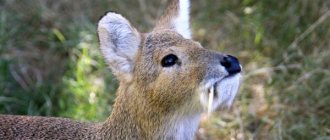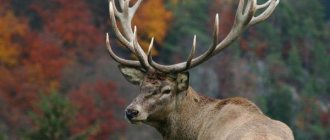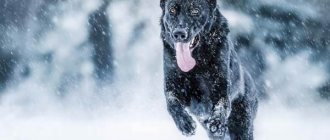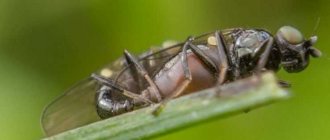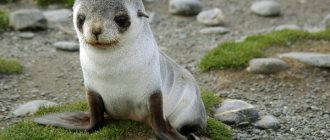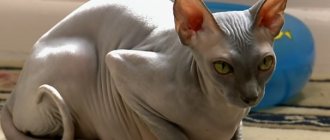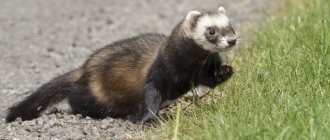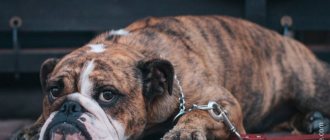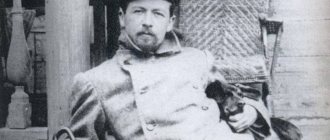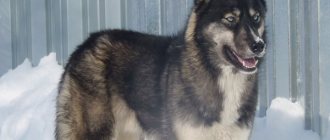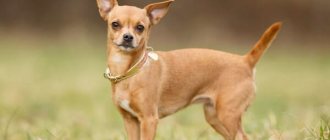Deer are artiodactyl animals from the deer family, numbering 51 species. Their range is very extensive: from northwest Africa to the far north. Each variety of these animals has its own unique characteristics of behavior and appearance, which help them adapt to life in all corners of the Earth, from deserts to arctic tundras. The most famous types of deer are red, sika and northern, but there are many more of them.
general description
The deer family includes very different animals , from small ones the size of a rabbit, pudu, to deer and wapiti (these are subspecies of red deer) with a body length of up to 2.5 meters and a weight of about 300 kg. The main distinguishing feature of these animals is their large branched horns - antlers, which males use in their mating games to fight for females. The size and shape of the horns vary from species to species. Reindeer, known as caribou, are distinguished by the fact that both males and females wear antlers, while water deer do not have antlers at all.
Some of these artiodactyls live alone, but most species form herds, the size of which depends on the habitat. The mating season for the inhabitants of the tropics can last all year round, but in temperate latitudes it occurs in autumn and winter - male animals from these regions shed and re-grow their antlers every year. The female's pregnancy lasts 6-9 months, usually one or two fawns are born, in rare cases - up to four. In many species, the cubs have a spotted coat color.
All deer, without exception, are herbivores whose diet is determined by their habitat and changes depending on the time of year. In summer, they prefer to eat berries, mushrooms, chestnuts, fruits, nuts, leaves and shoots of trees, but for both steppe and forest varieties, the basis of the diet is herbaceous plants.
In winter, they feed on lichens, horsetails, tree bark and branches, and acorns. Feeling the need for minerals, these artiodactyls sometimes gnaw on their own discarded antlers, lick salt on salt marshes, gnaw on damp earth, and animals that come to the sea eat fish, algae and crabs thrown ashore.
During the cold season, these animals also eat snow along with snow food to quench their thirst.
Features of character and lifestyle
Photo: Pampas deer
Pampas deer are social animals that live in groups. These groups are not separated by sex, and males move between groups. There are usually only 2-6 deer in a group, but in good feeding areas there can be many more. They do not have monogamous couples and do not have harems.
Pampas do not defend territory or comrades, but have signs of dominance. They show dominance by raising their heads and trying to keep their side forward and use slow movements. When males challenge each other, they rub their antlers into vegetation and scrape them along the ground. Pampas deer rub their scent glands into plants and objects. They don't usually fight, just squabble with each other, and usually bite.
During the mating season, adult males compete with each other for estrous females. They destroy vegetation with their horns and rub scent glands into their heads, plants and other objects. Aggression is manifested by pushing the horns or flapping the front paws. Frequent clashes occur between males of similar size. There is no evidence of territoriality, long-term pairing, or harem formation. Several males may pursue a receptive female at the same time.
Interesting fact: When pampas deer sense danger, they hide low in the foliage and hold on, then jump 100-200 meters. If they are alone, they might just quietly slip away. Females will pretend to limp near males to distract the predator.
Pampas deer usually feed during the day, but are sometimes nocturnal. They are very curious and love to explore. Deer often stand on their hind legs to reach food or see something. They are sessile and lack seasonal or even daily movement.
Selected species
Deer include three subfamilies: true deer, New World deer and water deer, represented by just one species. All of them belong to the chordate animals of the class of mammals of the artiodactyl order. In addition to the 19 modern ones, there are also 46 fossil genera of these beautiful animals, such as the extinct giant deer.
Old World or Real
The greatest diversity is represented by real deer , which includes about 30 species. These include the following types:
- noble;
- spotted;
- lyre deer or tameng;
- barasinga;
- Schomburgk's deer;
- white-faced;
- axis;
- Kul's deer;
- Kalamiansky;
- pork;
- crested;
- David's deer;
- Philippine spotted;
- sambar;
- doe;
- muntjac.
The most famous representative of this family is the red deer. Thanks to its correct proportions of the body, long neck with an elongated muzzle and large branched antlers, iconic for the species, it is rightfully considered the most beautiful and stately of the deer.
This type of animal has 15 subspecies, including the North American wapiti deer, Crimean, European, Bukhara and Caucasian deer, as well as the Far Eastern wapiti and Altai deer. It was this animal that inspired our ancestors to create stories, myths and legends, and to this day the image of a red deer with luxurious antlers is widely used in heraldry.
Its closest relative is the sika deer (sometimes called the Japanese or flower deer). This beautiful animal is named so due to its skin covered with white spots. In the summer season, it has a bright red color with a reddish tint, and in winter its color fades, becoming more faded and monochromatic. The physique of this animal is light and slender, and in size it is smaller than its noble counterparts. These artiodactyls live in herds of 10-20 individuals. They thrive both on plains and in mountainous areas.
Another prominent representative of the subfamily is the white-faced deer, so named because of the color of the front of the head and neck. This is a fairly large animal, adapted for living in the mountains at an altitude of up to 5100 m. It lives in the coniferous forests of eastern Tibet and the bordering regions of China, in the Alps. In summer its fur is brown, in winter it is gray, and its high and wide hooves help the animal feel comfortable on the mountain slopes.
Its very rare relative, listed in the world’s Red Book, is David’s deer, also known as milu. Nowadays, it is preserved only in captivity and is bred in various zoos around the world. In 1985, this species was introduced into the Dafeng Milu Nature Reserve in China, where it successfully took root and reproduces. Unlike most of their relatives, these animals like to stay in the water for a long time and swim well, which is why zoologists believe that this is a swamp species that once lived in northeast China.
There is also an Indian relative of the sika deer . The name of the crossword puzzle is often encrypted by 5 letters - axis. This is an elegant, graceful animal with red and white spots. The color of its skin, unlike other species, does not change depending on the season, and it sheds its thin horns with three branches several times a year.
The Ceylon subspecies of Axis is found only on the island of Sri Lanka in India. It is a vulnerable animal, large herds of which can only be found in protected areas. Ordinary representatives of the species often live near populated areas, gather in herds of several hundred individuals, reproduce well and do not need protection.
It is known that in the wild the Axis can interbreed with its closest relatives, the hog deer. These animals, so named for their appearance and gait, are considered the most clumsy among their brothers. They have short legs, a heavy body with a large belly, and hard short fur - all this gives the animals some resemblance to pigs. They live alone, sometimes females with cubs gather in small herds.
Another interesting Indian deer, albeit not closely related to the axis, is the barasinga (literal translation: a deer with twelve antlers, that is, branches), living in meadows and swampy areas. This species has a sparse, light brown coat, sometimes with subtle spots, that darkens in winter. Hooves with widely spread toes help the barasinga move through the quagmire, and its delicate sense of smell helps it spot predators in time.
New World Deer Species
The so-called New World deer can boast of slightly less diversity. They differ from their “old world” counterparts in a slightly different structure of the finger bones, the first and last of which are in their infancy. Despite the name, this genus includes not only American species, but also reindeer, Eurasian elk and two species of roe deer living in Eurasia. List of representatives of this genus:
- whitetail;
- black-tailed;
- Peruvian;
- South Andean;
- northern, also known as caribou;
- swamp;
- pampas;
- Pudu;
- mazam;
- roe;
- elk.
The most common species of these artiodactyls in North America is the white-tailed (aka Virginia) deer. It is noticeably smaller and more graceful than its noble brother, and its subspecies, living on the islands of the Florida Keys archipelago, is considered dwarf: only 60 cm in height and 35 kg in weight. This animal got its name from its tail, which is brown on top and white on the bottom. When running away, these artiodactyls raise their tails high, warning their relatives of danger.
The black-tailed deer is similar to its white-tailed counterpart, but is slightly smaller in size. It is also distinguished by its tail, which in the northern varieties is painted completely black, and in the southern ones - only at the tip. Another feature is its very large ears, for which the black-tailed deer is sometimes called donkey or big-eared. This species has two subspecies.
The northern one is a forest dweller, often spending the summer in the upper zones of the mountains, but wintering in the valleys, and the southern one, which has chosen shrubby semi-deserts as its habitat.
Of particular interest is the reindeer , also called caribou - the only species in which both males and females have antlers. In addition, it differs from other species in having a furry upper lip, underdeveloped sweat glands, thick fur, a thick layer of subcutaneous fat and some habits, the most noticeable of which is to gather in large herds. All these features help it survive in harsh tundra and taiga conditions.
Caribou is listed in the Red Book of Russia as a recovering species. It is of utmost importance in the life and culture of many northern peoples, because it was these animals that once allowed man to explore the coldest corners of the world. They are now hunted for their meat and skins, and domesticated specimens are used as pack animals and mounts. Domesticated animals are on average 10-20% smaller than wild ones.
It is worth mentioning the smallest species of deer in the whole world, which is called the Pudu. The height of its representatives is only 30-40 cm, and the weight reaches only 10 kg. There are two types of pudu: northern and southern. They are very similar in appearance, but the northern one is slightly larger. These animals have smooth, short fur, the color of which ranges from reddish to dark brown, a rounded body, short legs and simple horns that look like spikes. Poaching and habitat destruction have brought them to the brink of extinction.
Amazing deer without horns
There is only one representative of the water deer subfamily - actually, the water deer, an antlerless animal that lives in grassy thickets along the banks of reservoirs or in swamps. It lives in Korea and eastern China, near the Yangtze River, and was also brought by humans to France and Great Britain. Instead of horns, the males of these animals grew long (5-6 cm) saber-shaped fangs, which help them drive away enemies and competitors in mating games.
Outwardly, these animals resemble roe deer. They are not very large, up to a meter long and 45-55 cm high at the withers. Their fur is brownish-brown in color, with a white upper lip and spots around the eyes. Their fangs, which are the main distinguishing feature of the species, are located on the upper jaw and are movable. An adult male, with the help of his facial muscles, is able to move them back while eating and put them forward, baring his teeth menacingly when he senses danger.
These animals, unlike many of their relatives, are excellent swimmers and, in search of new pasture, can travel several kilometers across the water, moving between islands close to the shore. By nature, they are loners, preferring to meet each other only during the mating season and cannot tolerate strangers in their territory, which they mark with a special liquid from glands located between the fingers.
Giraffes
The giraffe family includes only 2 species - the giraffe and the okapi. Giraffes inhabit African savannas. Their extremely long necks allow them to reach the shoots on the tops of acacia trees, and their flexible tongue allows them to turn and tilt branches. Giraffes rarely eat grass, as it is difficult for them to bend down. When drinking water, they spread their front legs wide or bend them at the knees. Giraffes have small horns on their foreheads, sometimes 2 pairs. The spotted coloring of the giraffe seems very bright, but it perfectly camouflages the animal in the thickets. Giraffes live in herds of 7-12 individuals. Their tall stature and acute vision allow them to notice danger at a distance of up to 1 km.
Okapi resembles a giraffe, but has a shorter neck and a total height of only 1.5 m
Okapi were discovered only at the beginning of the twentieth century. Until now, very little is known about their life in nature; they are a very rare and secretive animal. Okapi live in the secluded corners of the tropical forests of the Congo River Valley.
The stomach of ruminants consists of 4 chambers. During grazing, ruminants do not chew the grass; it immediately falls into the voluminous rumen . It contains many bacteria that ensure the digestion of plant matter. Bacteria also work in the next section of the stomach - the mesh . Then the semi-digested mass is regurgitated, thoroughly chewed, moistened with saliva and swallowed again, but it enters other parts of the stomach - the book and abomasum , where it is digested under the influence of gastric juice, and only then enters the intestine.
Share link
Differences from immediate relatives
Roe deer, muntjac and moose, even though they belong to the same family as deer, are not species of these animals, but only their close relatives. And sometimes these noble animals are confused with other representatives of the fauna, such as pronghorn antelope. There are such features of deer that distinguish them from other horned artiodactyls:
- The main difference between deer and bovids is the structure of the horns. In bovids, they are bony processes of the skull that grow throughout life and in most species are present in both males and females. Deer antlers have a much more complex structure: they are tubular, filled with blood and covered with thin skin, and are also grown and shed by animals many times during their lives.
- Elk antlers, unlike deer antlers, tend to grow wider rather than higher. In addition, moose have thinner and higher legs.
- The horns of roe deer, in turn, are rough and covered with tubercles, and also do not have branches, so it is quite difficult to confuse them with deer, despite their close relationship.
Deer are very diverse: huge and small, with luxurious antlers and antlerless, plain, spotted and with a wide variety of color features, inhabiting fields, forests and mountains in all climatic zones. All of them, be it domesticated caribou, Indian axis, David's deer, which disappeared from the wild, or any other species, are unique in their own way, beautiful, worthy of attention, study and protection.
Habitat
The Axis species originates in the forested mountains of the Himalayas, covering Nepal, Sri Lanka and India. Most often, Axis can be found in the empty spaces of India. Due to the increase in population, the deer has acclimatized in the territories of various countries. An important factor for successful adaptation to a new territory is the absence of severe frosts. Herds of Axis have been discovered in Europe, living there for more than 150 years. As a rule, these deer live in tropical, sometimes subtropical, forests near water bodies.
Deer family
Social structure and reproduction
Photo: Pampas deer calf
Little is known about the mating system of pampas deer. In Argentina they breed from December to February. In Uruguay, their mating season lasts from February to April. Pampas deer have interesting courtship behaviors that include low stretching, crouching, and swerving. The male begins courtship with a low tension and makes a soft sound. He presses himself close to the female and may flick his tongue at her and looks away. He stays close to the female and can follow her for a long time, sniffing her urine. Sometimes the female reacts to courtship by lying on the ground.
Females separate from the group to give birth and hide the fawn. Usually only one deer is born, weighing about 2.2 kg, after a gestation period of more than 7 months. Newborn deer are small and spotted, and lose their spots at about 2 months of age. At 6 weeks they are able to eat solid food and begin to follow their mother. Fawns remain with their mothers for at least a year and reach reproductive maturity at approximately one year of age. Sexual maturity in captivity can occur at 12 months.
Pampas deer are a seasonal breeder. Adult males are capable of mating all year round. Females are capable of giving birth at 10-month intervals. Pregnant females can be visibly distinguished 3 months before giving birth. Most calves are born in the spring (September to November), although births have been recorded in almost all months.
Fox trail
Fox tracks allow an experienced hunter to determine the nature of its movement. A fox paw print is typically about 6.5 cm long and 5 cm wide. The step length is from 30 to 40 cm. However, during a hunt or when escaping pursuit, the fox makes fairly long (up to 3 m) jumps and throws forward, to the right or left - at right angles to the direction of movement.
Photo of fox tracks in the snow added by user kubazoud in 2016.
Wolverine tracks
It is difficult to confuse wolverine tracks with anyone else's. The front and hind feet have five toes. The length of the front paw print is about 10 cm, the width is 7-9 cm. The hind paw is slightly smaller. The snow is often imprinted with a horseshoe-shaped metacarpal callus and a carpal callus located directly behind it. The first shortest toe of the front and hind paws may not be imprinted on the snow.
Photo of wolverine tracks in the snow added by user Tundravik in 2014.
